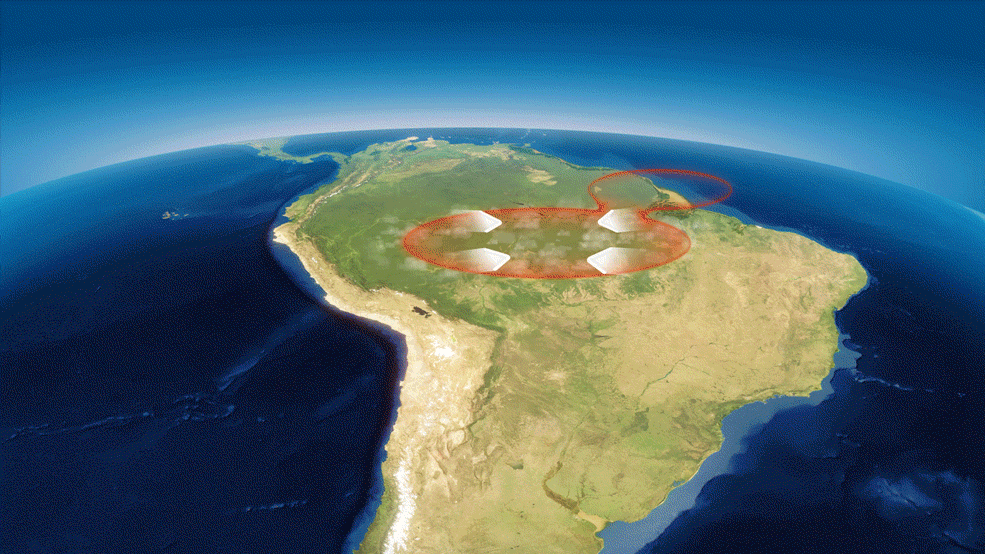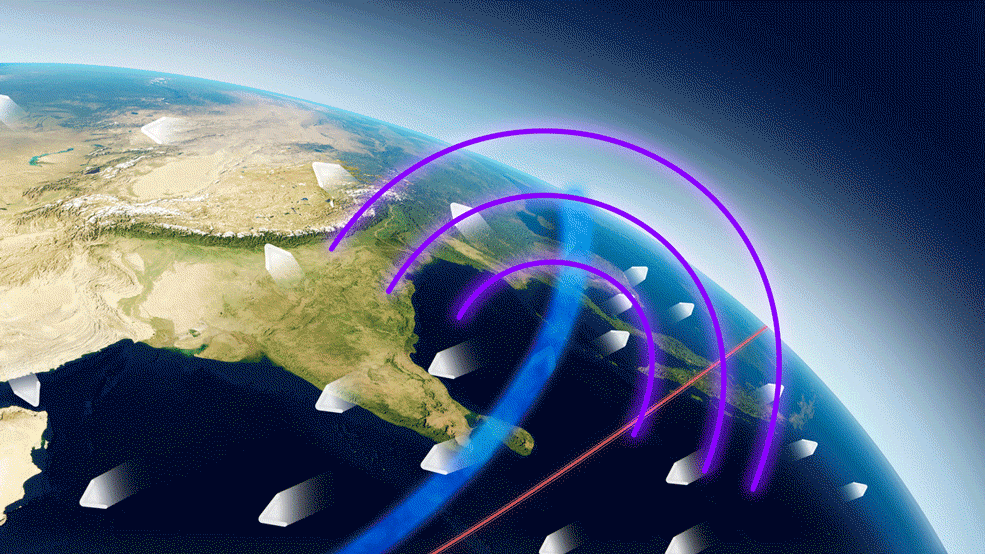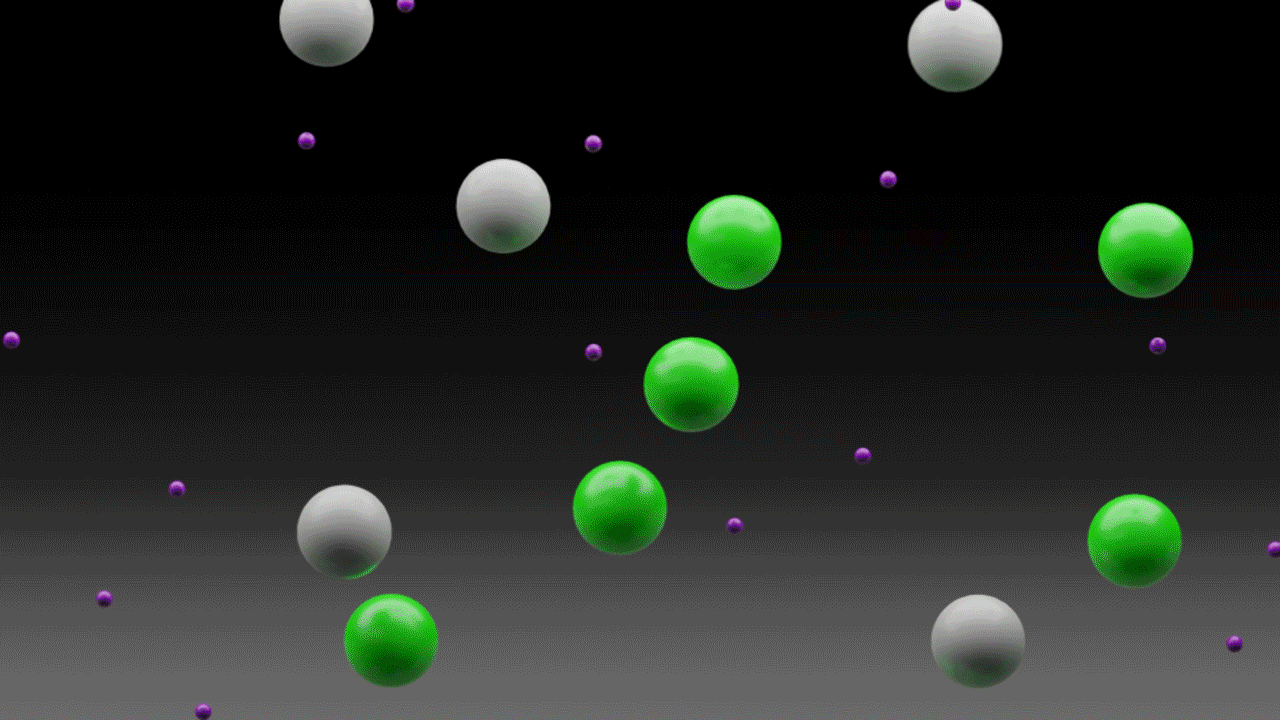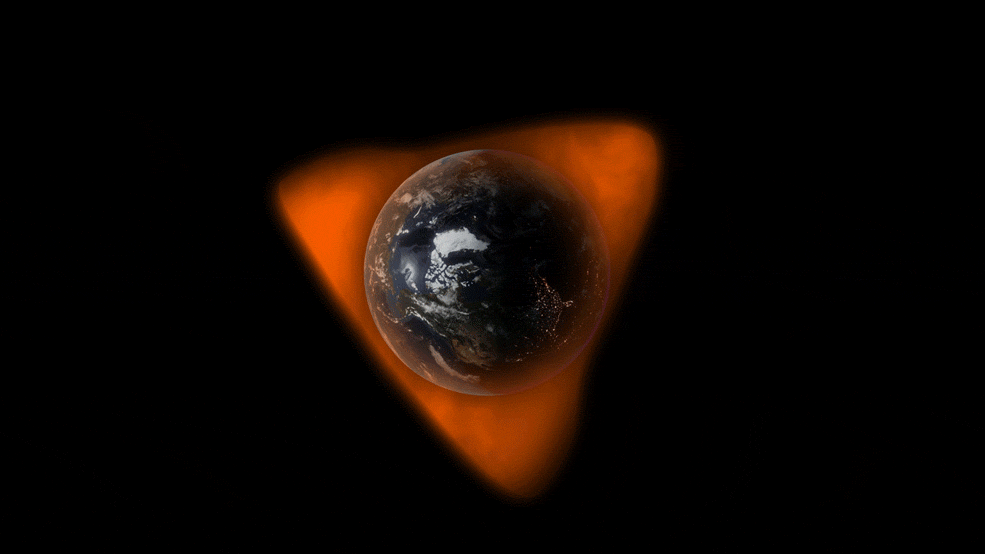What happens on Earth doesn’t stay on Earth.
Using observations from NASA’s ICON mission, scientists presented the first direct measurements of Earth’s long-theorized dynamo on the edge of space: a wind-driven electrical generator that spans the globe 60-plus miles above our heads. The dynamo churns in the ionosphere, the electrically charged boundary between Earth and space. It’s powered by tidal winds in the upper atmosphere that are faster than most hurricanes and rise from the lower atmosphere, creating an electrical environment that can affect satellites and technology on Earth.
The new work, published today in Nature Geoscience, improves our understanding of the ionosphere, which helps scientists better predict space weather and protect our technology from its effects.
Launched in 2019, ICON, short for Ionospheric Connection Explorer, is a mission to untangle how Earth’s weather interacts with the weather in space. Radio and GPS signals zip through the ionosphere, which is home to auroras and the International Space Station. Empty pockets or dense swells of electrically charged particles can disrupt these signals.
Scientists who study the atmosphere and space weather have long included Earth’s dynamo in their models because they knew it had important effects. But with little information, they had to make some assumptions about how it works. Data from ICON is the first concrete observation of winds fueling the dynamo, eventually influencing space weather, to feed into those models.
“ICON’s first year in space has shown predicting these winds is key to improving our ability to predict what happens in the ionosphere,” said Thomas Immel, ICON principal investigator at University of California, Berkeley, and lead author of the new study.
Credits: NASA’s Scientific Visualization Studio/William T. Bridgman
Download this video in HD formats from NASA Goddard’s Scientific Visualization Studio
Earth’s sky-high generator
The ionosphere is like a sloshing sea of electrically charged particles, created by the Sun and intermixed with the neutral upper atmosphere. Sandwiched between Earth and space, the ionosphere responds to changes from both the Sun above and Earth below. How much influence comes from each side is what researchers are interested in figuring out. Studying a year of ICON data, the researchers found much of the change they observed originated in the lower atmosphere.
Generators work by repeatedly moving an electricity-carrying conductor — like a copper wire — through a magnetic field. Filled with electrically charged gases called plasma, the ionosphere acts like a wire, or rather, a tangled mess of wires: Electricity flows right through. Like the dynamo in Earth’s core, the dynamo in the atmosphere produces electromagnetic fields from motion.
Strong winds in the thermosphere, a layer of the upper atmosphere known for its high temperatures, push current-carrying plasma in the ionosphere across invisible magnetic field lines that arc around Earth like an onion. The wind tends to push on chunky, positively charged particles more than small, negatively charged electrons. “You get pluses moving differently than minuses,” said co-author Brian Harding, a physicist at University of California, Berkeley. “That’s an electric current.”
In most generators, these components are bound tightly so they stay put and act predictably. But the ionosphere is free to move however it likes. “The current generates its own magnetic field, which fights Earth’s magnetic field as it’s passing through,” Immel said. “So you end up with a wire trying to get away from you. It’s a messy generator.”
Following the whims of the ionosphere is key to predicting space weather’s potential impacts. Depending on which way the wind blows, plasma in the ionosphere shoots out into space or plummets toward Earth. This behavior results from the tug-of-war between the ionosphere and Earth’s electromagnetic fields.
The dynamo, which lies at the lower end of the ionosphere, has remained a mystery for so long because it’s difficult to observe. Too high for scientific balloons and too low for satellites, it has eluded many of the tools researchers have to study near-Earth space. ICON is uniquely equipped to investigate this part of the ionosphere from above by taking advantage of the upper atmosphere’s natural glow to detect the motion of plasma.
ICON simultaneously observes powerful winds and migrating plasma. “This was the first time we could tell how much the wind contributes to the ionosphere’s behavior, without any assumptions,” said Astrid Maute, another study co-author and ICON scientist at the National Center for Atmospheric Research in Boulder, Colorado.
Only in the past decade or so, Immel said, have scientists realized just how much those rising winds vary. “The upper atmosphere wasn’t expected to change rapidly,” he said. “But it does, day to day. We’re finding this is all due to changes driven up from the lower atmosphere.”
Wind power
Familiar are the winds that skim the surface of Earth, from gentle breezes to bracing gusts that blow one way and then the other.
High-altitude winds are a different beast. From 60 to 95 miles above the ground, in the lower thermosphere, winds can blast in the same direction at the same speed — around 250 mph — for a few hours at a time before suddenly reversing direction. (By comparison, winds in the strongest Category 5 hurricanes tear at 157 mph or more.)
These dramatic shifts are the result of waves of air, called tides, born at Earth’s surface when the lower atmosphere heats up during the day then cools down at night. They surge through the sky daily, carrying changes from below.

The farther the atmosphere stretches away from the surface, the thinner it becomes and the less turbulence there is to disrupt these motions. That means small tides generated near the surface can grow much larger when they reach the upper atmosphere. “Changes in the winds up there are mostly controlled by what happens below,” Harding said.
ICON’s new wind measurements help scientists understand these tidal patterns that span the globe and their effects.
Tides ripple up through the sky, building in strength and growing before gusting through the ionosphere. The electric dynamo whirs in response.
The scientists analyzed the first year of ICON data, and found high-altitude winds strongly influence the ionosphere. “We traced the pattern of how the ionosphere moves, and there was a clear wave-like structure,” Harding said. Changes in the wind, he explained, directly corresponded to the dance of plasma 370 miles above Earth’s surface.

“Half of the motion of the plasma can be attributed to the winds that we observe right there on that same magnetic field line,” Immel said. “That tells you it’s an important observation to make if you want to predict what plasma is doing.”
ICON’s first year of observations coincided with solar minimum, the quiet phase of the Sun’s 11-year activity cycle. During this time, the Sun’s behavior was a low, constant hum. “We know the Sun’s not doing much, but we saw a lot of variability from below, and then remarkable changes in the ionosphere,” Immel said. That told the researchers they could rule out the Sun as the main influence.
As the Sun ramps up to its active phase, scientists will be able to study more complex changes and interactions between space and Earth’s atmosphere.
Immel said he is excited to have this confirmation of long-held ionosphere theories. “We found half of what causes the ionosphere to behave as it does right there in the data,” he said. “This is what we wanted to know.”
Still, Maute said, “This leaves room to explore what else is contributing to the ionosphere’s behavior.”
Additional resources:
By Lina Tran
NASA’s Goddard Space Flight Center, Greenbelt, Md.


























